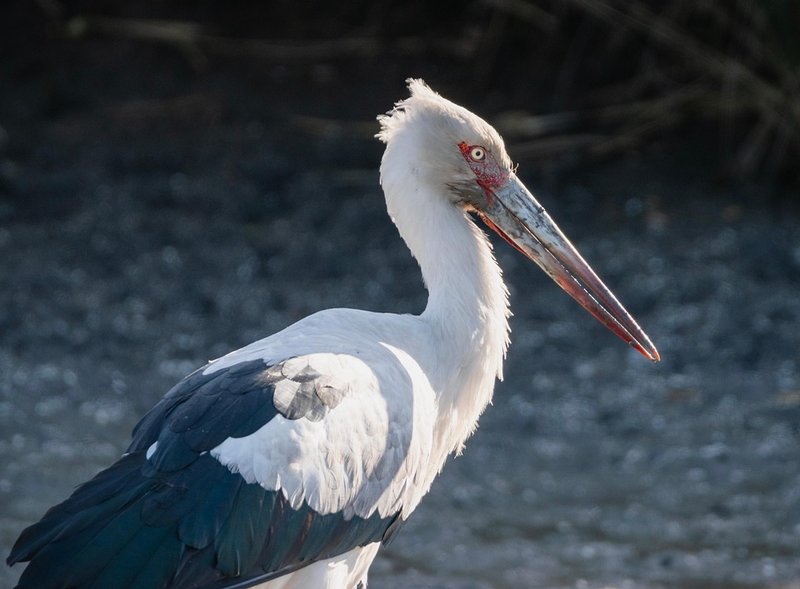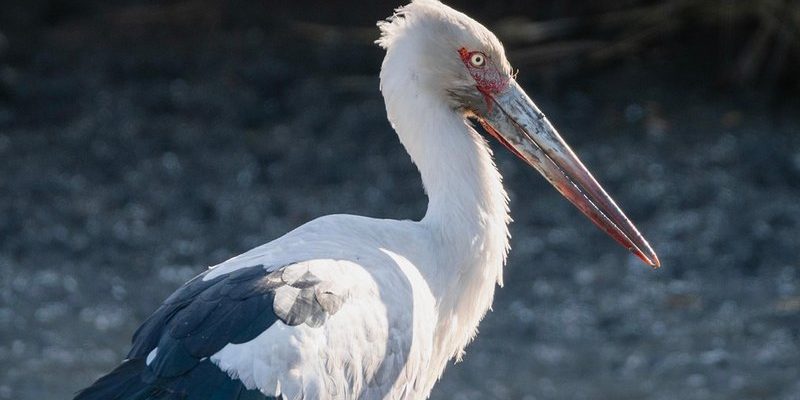
Storks are fascinating creatures, often associated with folklore and even baby delivery myths. But there’s a lot more to these birds than their reputation. If you’re hoping to catch a glimpse of one in the wild, knowing their physical traits, typical habitats, and behaviors is key. So, let’s dive in and explore how to identify a stork in the wild.
Physical Characteristics of Storks
Identifying a stork starts with understanding its physical traits. Storks are often large wading birds, and their size is one of the first things you’ll notice. They can stand anywhere from 2 to 4 feet tall, depending on the species. Their long legs and necks help them wade through shallow waters, making them look pretty majestic while doing so.
Most storks boast predominantly white plumage, but some species, like the Black Stork, have striking black feathers on their backs. Their beaks are long, pointed, and often red or orange, perfect for catching fish or amphibians. You might even see them using their beaks like a spear! The way they stand—often with one leg tucked up—adds to their graceful appearance.
Another key trait is their wingspan. Storks can have wingspans that reach up to 10 feet. When you see one soaring overhead, it’s hard to mistake them for another bird. Their slow, graceful flight pattern, accompanied by their large bodies, really makes it clear that you’re looking at a stork.
Common Species of Storks
There are several species of storks, but a few are more common and easier to spot than others. Here are a few you might encounter:
- White Stork: Often seen in Europe and parts of Africa, this is the most iconic stork species. They have white feathers with black wing tips and a loud, clattering call.
- Black Stork: Found in parts of Europe and Asia, their dark plumage makes them stand out. They prefer nesting near rivers and wetlands.
- Marabou Stork: This large African bird has a distinct bare head and neck, which can be a little unsettling at first glance. They often scavenge around garbage dumps.
- Wood Stork: Common in the southeastern United States, they have a unique appearance with a bald head and long, curved bill.
By familiarizing yourself with these common species, spotting a stork becomes much easier. Each has distinct behaviors and habitats that can help narrow down your search.
Where to Look for Storks
Storks love wetland areas, so knowing where to search is half the battle. Look for them around:
- Ponds and Lakes: Storks often wade in shallow waters hunting for fish and frogs.
- Marshes: These rich habitats provide ample food and nesting material.
- Grasslands: During the breeding season, storks will often build their nests in high places like trees or even on rooftops.
Honestly, if you join a birdwatching group or visit a wildlife refuge, your chances of spotting a stork increase dramatically. These locations are often rich in biodiversity and provide the perfect environment for observing these beautiful birds.
Understanding Stork Behavior
Behavior is another clue to identifying storks. They’re known for their social behavior, often seen in groups, especially during migration. Watching how they interact can provide insight into their species.
Storks are typically calm and deliberate in their movements. You might see them slowly walking through the water, poking their long beaks into the mud to find food. During courtship, they perform impressive aerial displays, which can be quite a sight. They often engage in bill clattering, a unique vocalization where they snap their beaks together to communicate with each other—especially during mating rituals.
You might be wondering how to tell a stork apart from similar-looking birds like herons or cranes. Here’s the thing: while storks are similar, their overall size and thick necks set them apart. Herons are generally slimmer, and cranes have more pronounced body shapes.
Time of Year to Spot Storks
The time of year also plays a significant role in your chances of spotting a stork. Many species are migratory, traveling long distances between breeding and wintering grounds.
For instance, White Storks migrate to Europe in the spring to breed and return to Africa in the autumn. If you’re hoping to see them, plan your visit during the spring months when they’re nesting. On the other hand, other species like the Marabou Stork can be found year-round in certain regions of Africa.
Timing your outings with their migration patterns can significantly enhance your birdwatching experience. Don’t forget to check local birding calendars or resources for more specific timings based on your location.
Tips for Identifying Storks in the Wild
When you’re out looking for storks, here are some helpful tips to make your search easier:
- Bring Binoculars: A good pair of binoculars can help you spot storks from a distance without disturbing them.
- Dress Accordingly: Wear comfortable clothes and bring sun protection. You might end up waiting quietly for a while!
- Patience is Key: Birdwatching requires patience. Sometimes, it’s about waiting for the right moment.
Also, consider using a field guide or a bird identification app. These tools can help you pinpoint the characteristics and sounds of storks, making identification much easier.
Identifying a stork in the wild can be a rewarding experience. With their unique features, fascinating behaviors, and preference for wetland habitats, there’s a lot to learn about these remarkable birds. By paying attention to their physical traits, understanding where to find them, and keeping an eye on seasonal patterns, you’ll be well on your way to spotting a stork on your next nature adventure.
So, next time you’re out exploring, keep those eyes peeled and your camera ready. You never know when you might catch a glimpse of one of these majestic creatures soaring gracefully overhead. Happy birdwatching!

